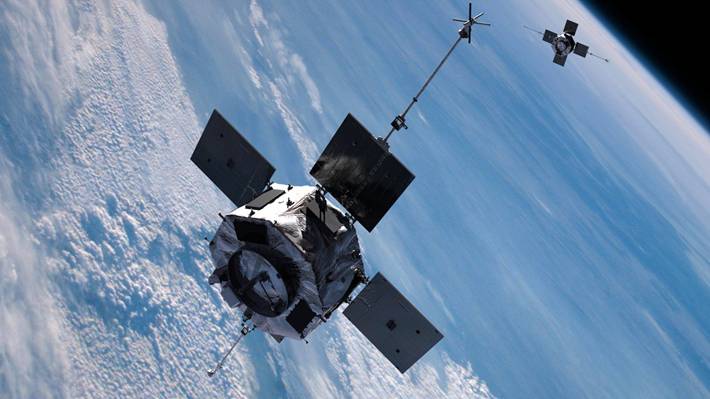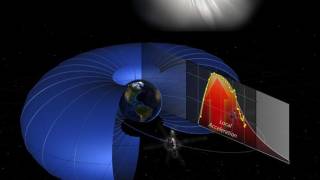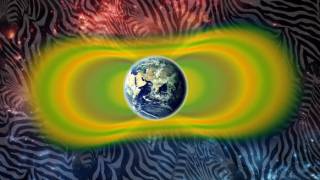NASA twin satellites to probe mysteries of the Van Allen belts
Source: news.cnet.com
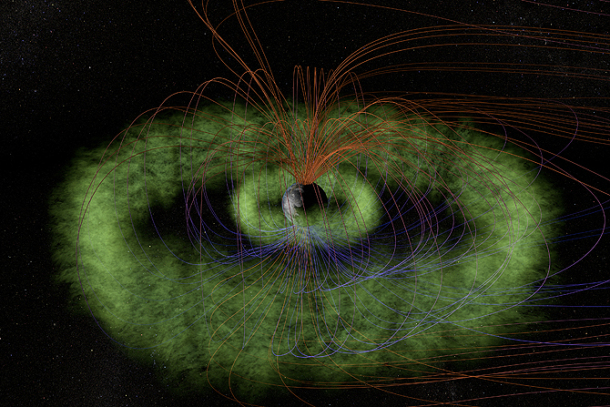
An Atlas 5 rocket boosted a pair of satellites into the maelstrom of the Van Allen radiation belts early today (Aug 30, 2012), kicking off a $686 million mission to probe the structure of the belts and how they’re buffeted by the sun and to improve forecasting to reduce the threat they pose to astronauts, power grids and increasingly critical satellite systems.
"Today, 11 years hard work was realized by the science team," said Nicola Fox, the deputy project scientist at Johns Hopkins University’s Applied Physics Laboratory. "They’re now at home in the Van Allen belts where they belong. ... For the science team, the real work now begins. One big milestone was getting up there. The next big milestones are all of our scientific discoveries."
Running six days late because of bad weather and trouble with a tracking system transponder, the 189-foot-tall United Launch Alliance Atlas 5 thundered to life at 4:05 a.m. EDT (GMT-4), lighting up the pre-dawn sky as it majestically climbed away from launch complex 41 at the Cape Canaveral Air Force Station.
Quickly accelerating through decks of low clouds as it consumed its load of liquid oxygen and kerosene rocket fuel, the Russian-designed RD-180 first-stage engine boosted the rocket out of the dense lower atmosphere and fell away about four minutes after liftoff. A few seconds later, the rocket’s hydrogen-fueled Centaur second-stage engine ignited, continuing the climb to space.
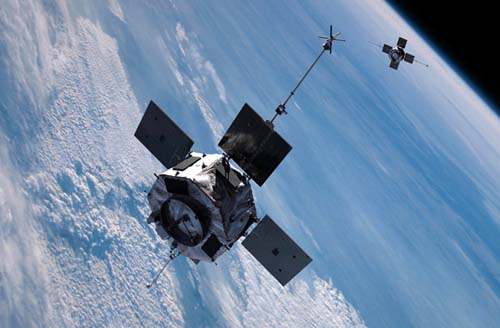
An artists impression of the Radiation Belt Storm Probes mission in orbit. Using two identical probes in concert will let scientists learn far more about the Van Allen belts than they could from any number of single-probe missions.
The Pratt & Whitney RL10A engine burned for nine minutes and 15 seconds to propel the launcher and its dual-satellite payload into a preliminary parking orbit. Fifty-six minutes later, a second four-minute 39-second burn completed the launch phase of the mission.
[...]
Into the hellish space of the Van Allen belts
The RBSP satellites were designed to fly in slightly different orbits tilted 10 degrees to the equator with high points, or apogees, around 19,000 miles and low points, or perigees, between 310 and 420 miles. The spacecraft will periodically lap each other, passing as close as 100 miles from each other and as far apart as 24,000 miles or so.
The spacecraft will fly through both main radiation belts, enduring hellish conditions to precisely measure the fields and particles defining the doughnut-shaped structures, how they expand and contract as they are buffeted by solar storms and how they change over time.
"Sometimes we see (an event) coming from the sun and the radiation belts pump up, they get much larger in size and much larger in energy," Fox said before launch. "Other times, they actually shrink and almost go away. And then there are times the radiation belts seem to not know that anything has happened.
"We know what processes are going on in the radiation belts. It’s almost like making a cake. You know all the ingrediants, but you’re not quite sure of the proportions of each piece in each given storm. Sometimes, one process is far more dominant than another and that is obviously causing the radiation belts to respond differently to seemingly similar things coming from the sun."
[...]
Read the full article at: news.cnet.com
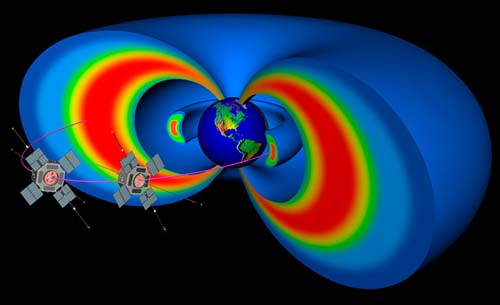
The probes will pass through both the inner and outer Van Allen belts, where charged particles are concentrated by the Earth’s magnetic field, and study how the belts are affected by changes in the solar wind.
NASA Promo:
